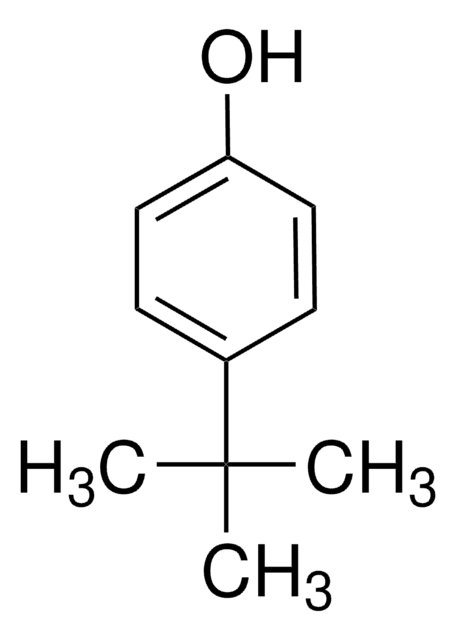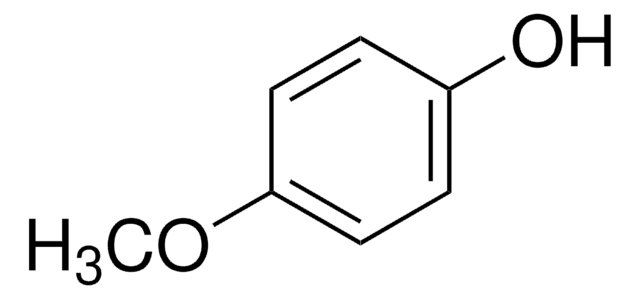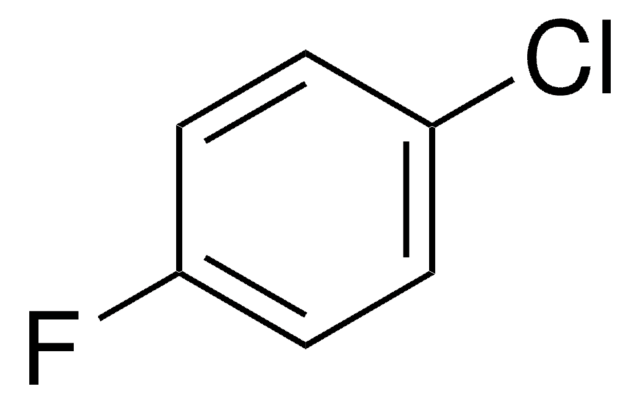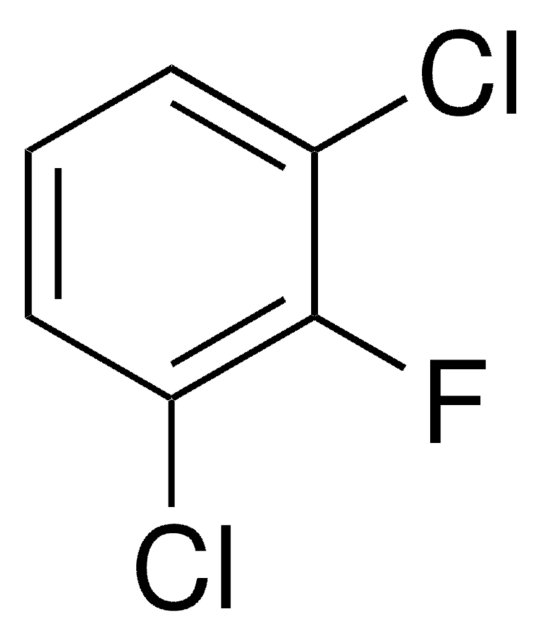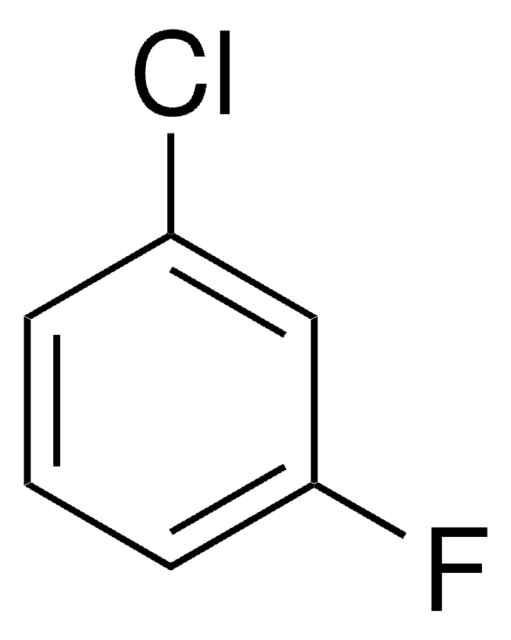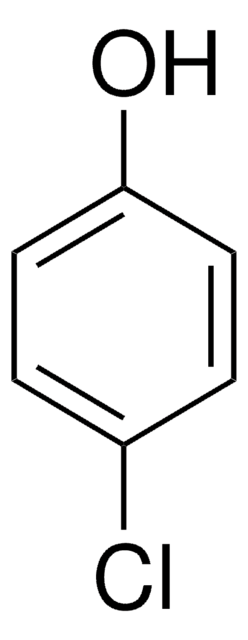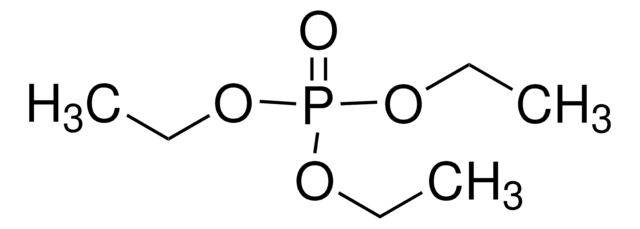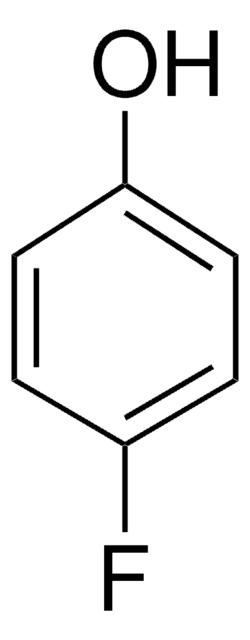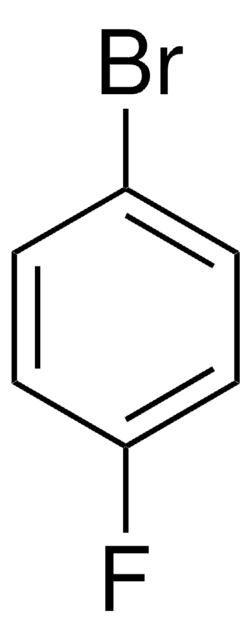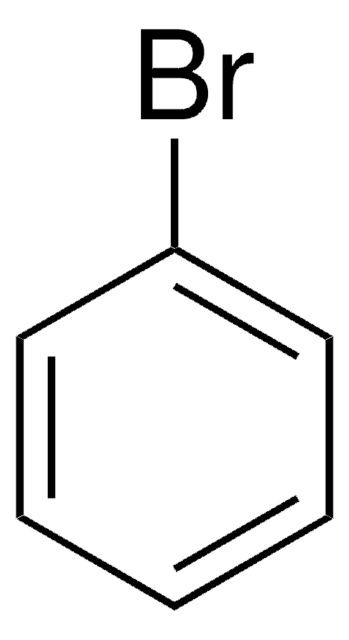All Photos(1)
About This Item
Linear Formula:
ClC6H4F
CAS Number:
Molecular Weight:
130.55
EC Number:
MDL number:
UNSPSC Code:
12352100
PubChem Substance ID:
NACRES:
NA.22
Recommended Products
Quality Level
assay
99%
form
liquid
refractive index
n20/D 1.501 (lit.)
bp
137-138 °C (lit.)
mp
−43-−42 °C (lit.)
density
1.244 g/mL at 25 °C (lit.)
functional group
chloro
fluoro
SMILES string
Fc1ccccc1Cl
InChI
1S/C6H4ClF/c7-5-3-1-2-4-6(5)8/h1-4H
InChI key
ZCJAYDKWZAWMPR-UHFFFAOYSA-N
Looking for similar products? Visit Product Comparison Guide
Application
1-Chloro-2-fluorobenzene was used in the 9F NMR analysis of conversion of 3,4-fluoro- and 3-chloro-4-fluoroaniline by Rhodococcus sp. strain. It was used in microwave-assisted traceless rapid synthesis of benzimidazolones on Ameba resin.
signalword
Warning
hcodes
Hazard Classifications
Eye Irrit. 2 - Flam. Liq. 3 - Skin Irrit. 2
Storage Class
3 - Flammable liquids
wgk_germany
WGK 3
flash_point_f
87.8 °F - closed cup
flash_point_c
31 °C - closed cup
ppe
Eyeshields, Faceshields, Gloves, type ABEK (EN14387) respirator filter
Choose from one of the most recent versions:
Already Own This Product?
Find documentation for the products that you have recently purchased in the Document Library.
Customers Also Viewed
Haifeng Chen et al.
Chemosphere, 146, 32-39 (2015-12-29)
Halonitromethanes (HNMs), as an emerging class of disinfection by-products containing nitrogen (N-DBPs) in drinking water, have possessed public health concerns. Two most studied materials, graphene and nanometer-sized zero-valent iron, have been successfully combined into binary nanocomposites (G-nZVI) via facile carbonization
Microwave-assisted traceless synthesis of benzimidazolones.
Xu X-J and Zong Y-X.
Tetrahedron Letters, 48(1), 129-132 (2007)
Vasili Travkin et al.
FEMS microbiology letters, 209(2), 307-312 (2002-05-15)
In this paper we report the isolation and characterization of an anaerobic enrichment culture as well as of a Rhodococcus sp. strain 2 capable of degrading 3,4-dihaloanilines under nitrate reducing conditions. Using mass spectrometry several of the intermediates formed in
Our team of scientists has experience in all areas of research including Life Science, Material Science, Chemical Synthesis, Chromatography, Analytical and many others.
Contact Technical Service